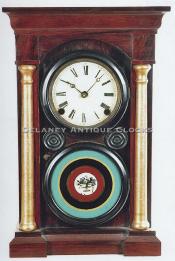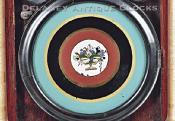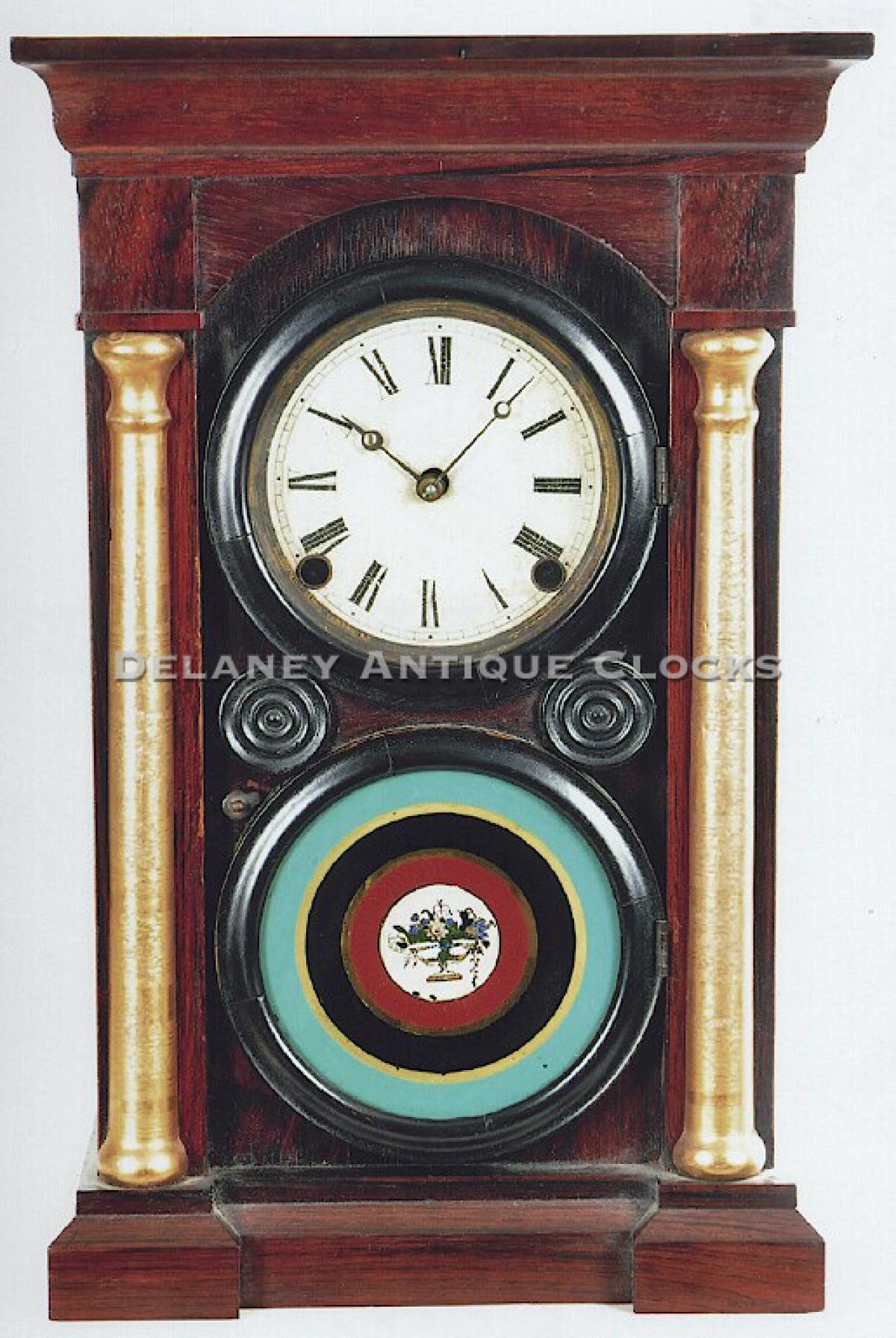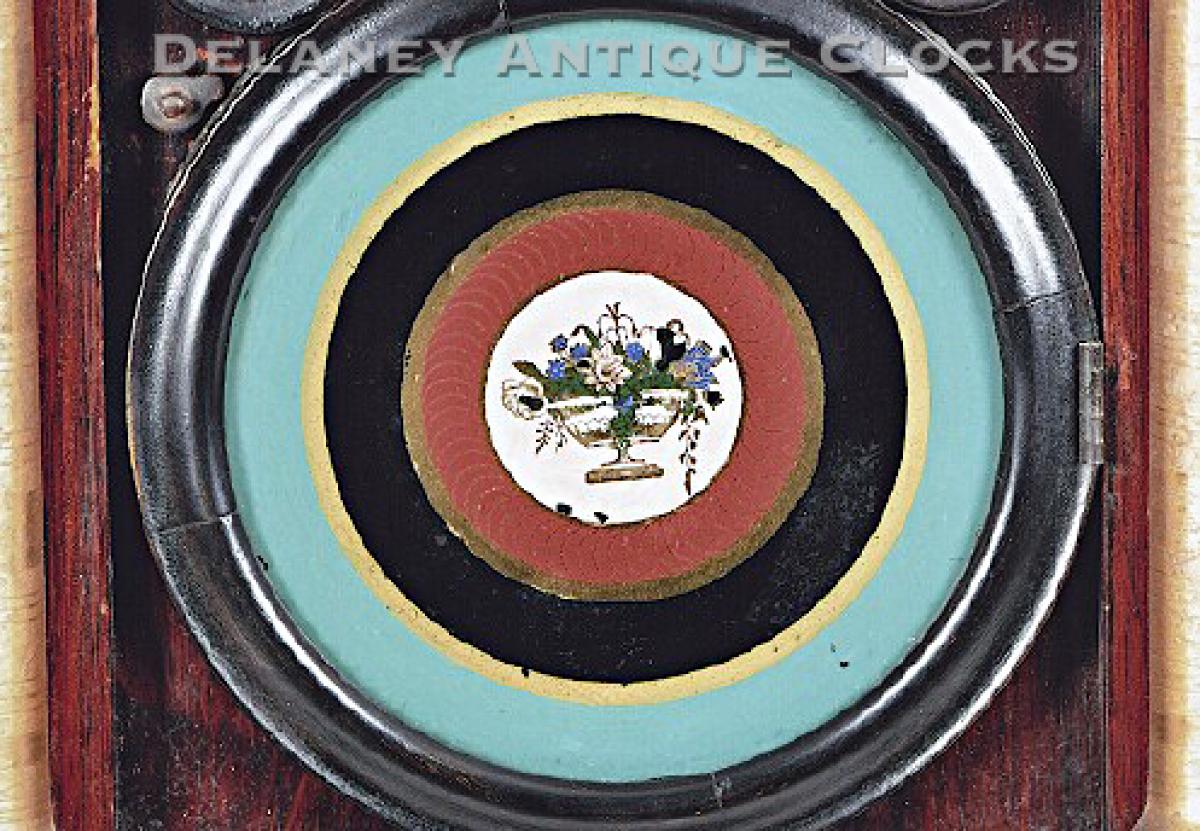E. Ingraham & Co., Bristol, Conn. Arch Top No. 1 Mantel clock. TT-159.
Elias Ingraham was born in Marlborough, Connecticut, on October 1, 1805. He died in 1885, Elias died, and his brother Edward carries on as the President of E. Ingraham & Co. The Ingrahams, as a family, made and sold clocks for over 150 years.
Elias was trained as a case maker. He served his apprenticeship in Glastonbury. Once a journeyman, he took a job for George Mitchell designing cases.
This model represents a business that was started in 1857. Elias had just moved back from Ansonia to Bristol and rented the old Boardman shop on Pond street. With several financial backers, he formed the Elias Ingraham & Company. This is one of the first models he designed. It is referred to as the "Arch Column No. 1." It first appeared in 1857 when Elias was granted a patent for the case design. This model remained in production for 15 years. The example pictured here is a later version having the door fitted with two circular openings. The early versions have a circle over a square opening.
This case measures approximately 17 inches tall and is veneered in rosewood. Note the large cornice molding located at the top of this case. This version has flat sides between the upper and lower moldings. There is a variant case that features arches on the sides. The door is centered in the front of the case by two tapered columns applied to the case. These columns retain their original gilding and are in excellent condition. One can still see the concentric rings that are burnished into the design. The lower tablet is unusual in terms of its coloring. Multiple colors are used in the design. The center panel depicts an urn filled with florals on a pink field. This tablet is in good original condition. The upper section is fitted with a clear piece of glass. Open this door, and one can access the dial and interior of the case.
The dial is paper and is applied to a tin pan. It is original to the clock. It features Roman-style hour numerals. The dial pan is trimmed with a brass bezel. Pressed into the outer ring is the May 10, 1859 patent date.
The brass spring-powered movement is designed to run for eight days on a full wind and strike the hour on a wire gong. The striking mechanism is a count wheel design.
The Maker's label is applied to the backboard. The condition of which is very good. This label was printed by the "Calhoun Printing Company, Hartford, Conn." It lists 4 of Elias Ingraham's Patents. The last one was granted on May 10, 1864.
This clock was made circa 1865.
Inventory number TT-159.
Elias Ingraham was born in Marlborough, Connecticut, on October 1, 1805. He worked as a cabinetmaking apprentice for five years in Glastonbury. In 1825, he purchased his freedom and began working as a journeyman for Daniel Dewy of Hartford. In 1828, Solomon Hinman convinced him to move to Bristol and to make clock cases for George Mitchell. It is here that Ingraham designed and constructed the “Transitional” shelf clock form. Ingraham soon moves on and works for several other clock and furniture ventures. After numerous ventures, he formed the Elias Ingraham & Company in 1857 and was granted the first two patents in case design. The first was for the “Arch Column case, and the second was for the door design found in this example, having two circular doors separated by decorative rosettes. This design became extremely popular, and its influence finds its why in some of Ingraham’s competitor’s models. In 1860, the firm’s name changed to E. Ingraham & Company, reflecting a partnership with his son Edward. Elias died at his summer home on Martha’s Vineyard in August 1885. The business continued in various forms.




